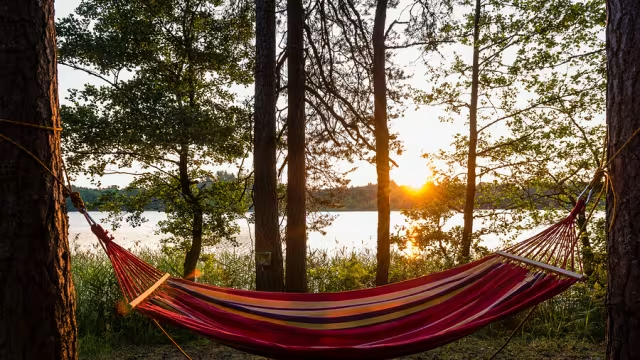Three Relaxing Ways to Get Outside and Celebrate Earth Day
You don’t need to be planning a run or hike to get outside and boost your health. There are plenty of more relaxing ways to enjoy nature with health benefits of their own that are not as commonly known. The benefits of outdoor and indoor plants go beyond aesthetics and increasing shade or oxygen levels. Research findings on health effects of being in green environments has increased and confirmed social, psychological, and physical benefits of access to nature. Living in greener environments enhances recovery from surgery, improves immune system functioning, and supports better cognitive functioning. A series of studies on environmental psychology reported that people who spent more time in natural settings have a greater sense of vitality, including feeling increased energy after being outdoors. Another study also found that spending a few days unplugged in nature lead to 50 percent higher scores when testing the creativity of participants. Nature-friendly fun is available for all ages and ranges from creative crafts to tying up a hammock between trees. Soak up the benefits of nature and plan some fun for Earth Day, coming up on Saturday April 22, with these activities:
Hang Out in a Hammock
Hang a hammock between two big trees come to create a natural relaxation sanctuary. Besides giving you time in the outdoors, hammocks are known to enhance sleep so you can fall asleep faster, sleep deeper, and wake up with a sharper mind. Make sure the trees selected for hanging look healthy as opposed to dead, diseased, or unstable! Tying up hammocks can be done easily with straps or ropes. Most beginners use webbing straps that can also be healthier for trees as they prevent rope friction damage. When using ropes, have at least two sets about nine to ten feet long. Two knot types are required: a static knot tied to one end for handling heavy loads and an adjustable knot (or ridgeline) to the other end. The most basic static knot is the backpacker hitch where you wrap the rope around a tree several times and tie it in place allowing friction to hold you up. The bowline is another popular version of a static knot. For the ridgeline, a reliable and simple knot is the midshipman’s hitch, also known as the taut-line hitch.
Gather Crafting Materials Outdoors
Being around trees can boost creativity levels as well as provide free natural materials for creating crafts. Look for smooth, flat stones, and gather up 28 of them to paint on and turn into homemade rock dominoes. Driftwood or a broken branch can also be taken home, decorated, and secured with hooks for a home-made painted hanger. Pressing flowers is also an easy way to create homemade gifts featuring nature’s beauty. Make sure to harvest flowers on dry days, keep them out of direct sunlight once picked, and transfer them into a press as soon as possible. Although layered heavy books act well as a press, drying out flowers can also easily be completed in two minutes using a microwave. Pressed flowers can be framed and hanged as a picture, made into bookmarks, or combined into a paper-mache lantern for a flowery glow.
Use Activities to Teach Children About Nature
Outdoor fun can double up as an educational experience for children. This saves money on store-bought craft kits and allows youth to use their imagination when gathering and using the natural materials. A popular activity is creating tree rubbing collages by coloring on a tree trunk so the texture comes through. Rubbings made with different trees can teach children about the variety of existing species and textures. Kids can also easily help with collecting pinecones to combine with string, bird feed, and peanut butter for homemade bird feeders. Hanging a bird feeder on a tree creates a fun way to learn about what birds are native in the area. Gathered sticks can also be used to create weaving looms for children to collect flowers and leaves to populate and weave their own artistic designs.



